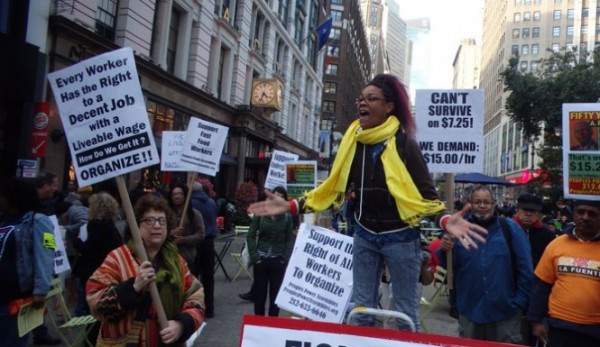Since the arrival of the May occupations report, President Obama and a lot of people in the media have been crowing about new proof professedly demonstrating that lowest pay permitted by law treks animate employment development.
At a discourse in Denver on July 9, Mr. Obama noted that “since I initially asked Congress to raise the lowest pay permitted by law, 13 states have felt free to raised theirs—and those states have seen higher employment development than the expresses that haven’t raised their lowest pay permitted by law.”
Here’s the place this story began. In June, the Center for Economic and Policy Researchreleased a report asserting that contrasted and the 37 expresses that did not bring their lowest pay permitted by law up in January, the 13 expresses that did had as a rule higher occupation development from January to May 2014. The information originated from the U.s. Department of Labor Statistics.
Nobody resolved to proof based open arrangement would acknowledge these scanty actualities as reason for raising the lowest pay permitted by law.
Why would firms employ more laborers when government raises the expense of procuring specialists? The dynamic answer is that trekking the lowest pay permitted by law raises the salaries of poor specialists, making them use more. This extra using, thusly, is great to the point that organizations contract much more specialists.
When you raise the lowest pay permitted by law, as Mr. Obama said in Denver, “that cash gets beat go into the economy. Also the entire economy improves, including the organizations.”

This hypothesis is questionable for some reasons, not slightest in light of the fact that lowest pay permitted by law laborers make up around 2% of the workforce, a rate much excessively little to have such an impact. Yet in the event that this hypothesis were legitimate and if these information uncover helpful data then employment development ought to be more prominent the higher the lowest pay permitted by law support.
Not really. Of the 13 expresses that raised the lowest pay permitted by law, Connecticut, New Jersey and New York were the three that raised it most, with expansions going from 5% to 14%. These three states additionally accomplished the most exceedingly bad employment development in the middle of January and May, a normal of 0.03% contrasted and a normal 1.28% for the other 10 states.
For sure, work development was more awful in each of these three states than it was, as a rule, in the 37 expresses that did not raise their lowest pay permitted by law whatsoever. Besides, in New Jersey, the express that climbed the lowest pay permitted by law the most—to $8.25 a hour from $7.25—business really fell by around 0.56%.
Washington accomplished the biggest occupation development at 2.1%, yet the state just raised its hourly the lowest pay permitted by law by 13 pennies. A full-time the lowest pay permitted by law worker in Seattle now gains, before duties, an incredible $23.80 more a month. That is scarcely enough to cover supper for two at a chain restaurant.
Consider additionally that in the middle of December and May the cost of fuel rose by more than 20 pennies a gallon, as per Gasbuddy.com. The lowest pay permitted by law specialists would require a huge piece of their higher pay to take care of the expanded expense of driving. There’s no chance to get there was sufficient left over to start additional occupation development.
We directed a factual examination of the Bureau of Labor Statistics’ information called a two-specimen “t” test for looking at two methods. We found, for this time period, no distinction in the employment development slant in the expresses that raised their base wages from expresses that did not.
At the end of the day, the relationship refered to as exposing the financial body of evidence against the lowest pay permitted by law is not measurably significant.
The lowest pay permitted by law supporters may say the information at any rate demonstrate that a higher the lowest pay permitted by law does not diminish work development. That is additionally not what we found.
At the point when looking—over the time-compass December 2013 through June 2014—at just the 13 expresses that brought their lowest pay permitted by law up in January, those that raised it the most had, generally, lower work development than did those that raised it the slightest.
This specific finding is not independent from anyone else confirm that raising the lowest pay permitted by law moderates work development; these information remain excessively small. At the same time it does run counter to the White House story.
In short, there is no sound premise in this Labor Department report for dismissing the principal monetary comprehension that raising firms’ expense of utilizing low-talented specialists makes firms less ready to utilize such laborers.
The information are just no motivation to reject this central monetary statute: When you raise the expense of contracting, organizations will do less of it.
Until there’s a sound hypothesis for why raising the cost of low-ability work doesn’t decrease managers interest for it, and until that hypothesis is affirmed by genuine, observational investigation focused around sufficient information, the main authentic the lowest pay permitted by law stance is that it shrivels the vocation choices for the very specialists it apparently expects to help: the poorest of the low-talented.
